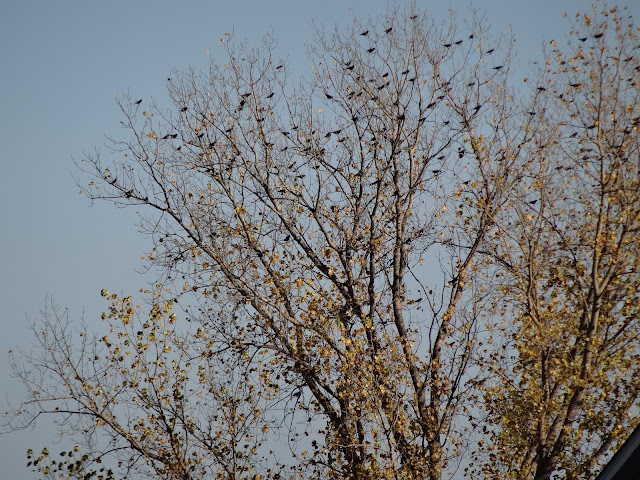In June, a Mallard mama brought her 6 newly-hatched ducklings to the water (see 6/27/2021). A few weeks went by, and only 2 ducklings remained with the adult. We watched as they became more independent each day, no longer swimming so close to her. Eventually, the mama would leave them to feed alone since they knew to hide among the grasses. She would hide herself from predators because she was molting. So we only saw her every few days with them. We called the two ducklings the 'twins'.
(pix above: twins in July with Mallard mama)
One day in August, a Canada Goose appeared on the pond. It glided on the water, showing off its newly molted feathers. But it stayed here day after day, feeding with and hanging close to the twins. All of them seemed to be comfortable with each others' company. All seemed healthy and happy on the quiet pond with plenty to eat, overhanging grasses and reeds to hide in, and rocks to sit on for sunny naps. They dabbled for food in the water together. Even the mama mallard seemed okay with the goose.
We puzzled why the goose was here. According to research, Canada Geese mate for life. If one loses a mate, it may stay alone. A lone female may help other families herd and raise their young. I like to think this was a female goose who lost her mate; maybe she wanted to help the mallard ducklings since their mama was vulnerable to predators while growing new feathers. She stayed until the twins grew their wing feathers and muscles strong enough to fly out from the pond. She disappeared from pond a day after the mallards departed, at the end of August.
(pix below: twins in August with lone goose)































